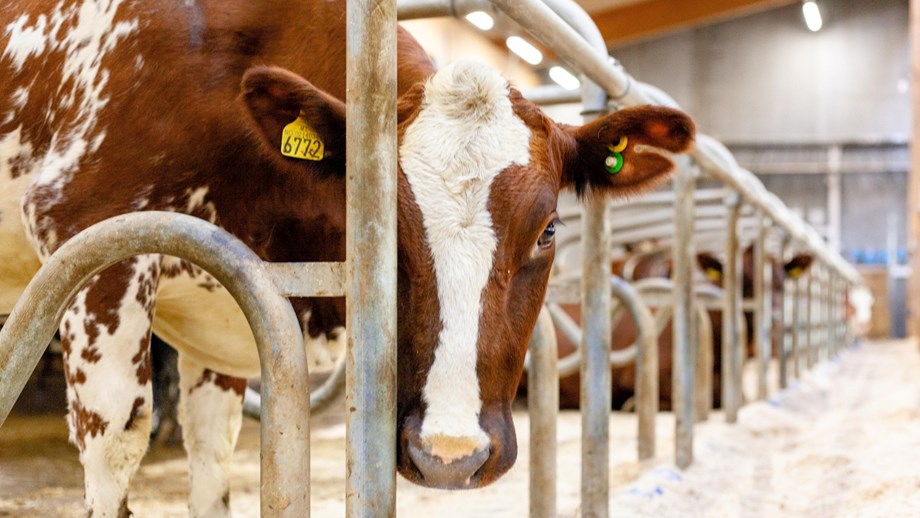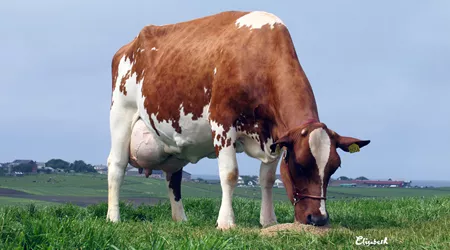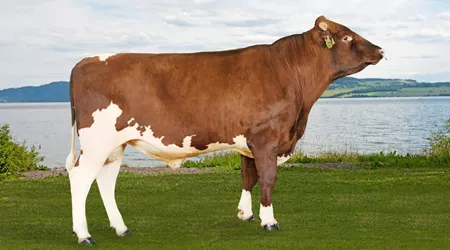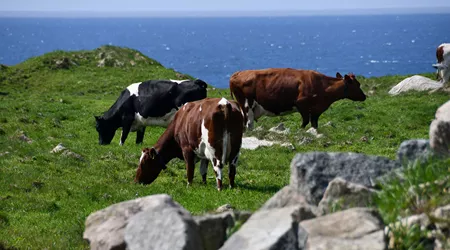Across the dairy industry, the demand for animal health and welfare continues to soar, and Geno continues to align its ambition and strategy with these important motions. And in today’s pressing issues around animal welfare and sustainability, Geno has strengthened its focus on improving health and fertility traits on the Norwegian Red population.
Health traits have been included in the Total Merit Index (TMI) since 1978 and fertility since 1971 for the Norwegian Red breed, and Geno’s work will continue to put focus on these important traits to help farmers achieve faster genetic gains for their herds.
Strong focus on health and fertility since 1935
Since 1935, Norwegian farmers have started to focus on the importance of animal health and healthy farming to produce healthier food for humans. Since then, the Norwegian Red breed has obtained excellent production performance combined with the world's maintained its position as the best performance in health and reproduction traits, and today has helped many farmers around the world to achieve profitability and sustainable business.
Fertility has been included in the Total Merit Index (TMI) of the Norwegian Red breed since 1971. The genetic trend for fertility is positive in the Norwegian Red with an average 56-day non-return rate of 72% in cows in Norway (2014). Undoubtedly, making the Norwegian Red the most fertile breed of dairy cattle in the world.
The individual health card and recording system
From the early 1970s, the Norwegian dairy farmers have initiated the use of individual health cards for the recording of veterinary treatment in cattle. This longstanding operation of the health recording system has enabled well-documented statistics over the use of antibiotics in Norwegian cattle. In compliance with EU demands for monitoring antibiotic consumption and antimicrobial resistance, the Norwegian Government implemented an action plan, NORM-VET, in 2000. Accordingly, recordings show a 17 % reduction in the use of antibiotics in production animals from 2013 to 2021.
Norway maintains low use of antibiotics
Reducing the use of antibiotics in agriculture has led to a change in treatment strategies, optimized routines for preventive veterinary medicine, and a long-lasting emphasis on health in the national breeding program for Norwegian Red, the predominant cattle breed in Norway. The latest report from the European Surveillance of Veterinary Antimicrobial Consumption (ESVAC) has once again highlighted that Norway has successfully maintained low consumption patterns of antibiotics for food-producing animals in the country compared to the other 31 countries within the EU/EEA.
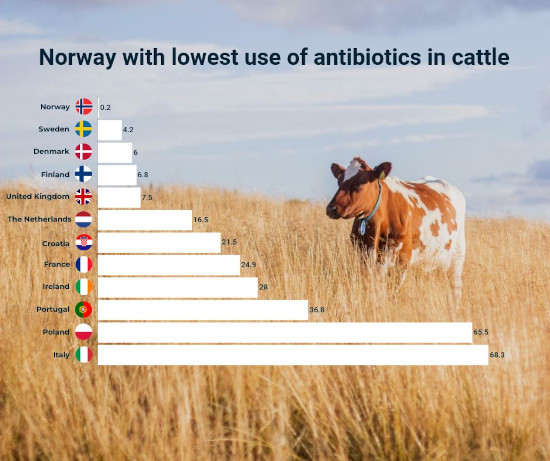 Chart: Sales of veterinary antimicrobial agents in 31 European countries in 2020 by the European Medicines Agency
Chart: Sales of veterinary antimicrobial agents in 31 European countries in 2020 by the European Medicines Agency
Sustainable and Green focus
Geno and its Norwegian Red dairy cattle breed are already long on their way to push their commitments to tackle climate issues by focusing on lowering methane emission and improving genetics to produce healthier and more sustainable dairy cattle breeds for global use.
As of today, Geno and Norwegian Red breed have contributed to lowering greenhouse gas emissions through several significant projects and innovative solutions that put a strong focus on:
- Efficient production
- Few empty days from excellent fertility
- Few sick days from good health
- Milk and meat from the same animal
- Methane monitoring project for cows and bulls to reduce global emission
Investing and collecting big data
The continuity of data collection and the collaboration extended by the dairy industries, from farmers to dairy producers are critical for all these projects and research contexts. By investing heavily in the collection of big data, Geno is collecting comprehensive, objective, and robust research results that will lay the foundation for the realization of significant emission cuts.
By 2021, the data flow from new projects to Geno has been already so well established that the analysis and research work can begin. In 2024, it is expected that there is a basis for selecting animals with methane emissions as a trait, and we will then begin to make direct progress at the genetic level also for methane emissions. Breeding has permanent effects, and the genetic progress is cumulative, and it is possible to improve the genetics for each generation of breeding animals to be on the greener side.
Norway has committed itself to reducing greenhouse gas emissions by 55 percent by 2030, and agricultural organizations have entered an agreement with the Government - Agriculture's climate plan. The agreement entails a reduction of the industry's total emissions by 5 million tonnes of CO2 equivalents and extends from 2021 to 2030.
